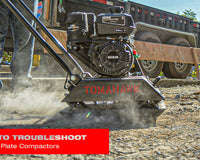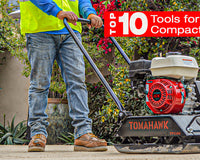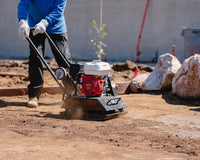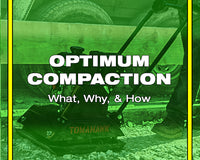Ask any contractor starting a sidewalk project, and one of the first questions that comes up is, “How wide should it be?” Whether you're installing a walkway for a suburban home or prepping concrete for a city block, the width of your sidewalk influences everything—from form layout to which compaction tools are suitable. But there’s more to consider than just dimensions. Let’s explore not only standard sidewalk widths, but also how that relates to choosing the right compaction equipment for a solid base.
Residential vs. Commercial Sidewalk Widths
In residential neighborhoods, sidewalks are typically between 3 to 5 feet wide. Three feet provides enough space for single-person foot traffic, but many modern developments now opt for 4 feet to allow for walking side by side or accommodating strollers. On the other hand, commercial sidewalks or urban pedestrian routes often range from 6 to 12 feet in width, depending on zoning laws, pedestrian volume, and accessibility requirements.
These differences matter when selecting tools. Narrow sidewalks might require compact equipment to fit within tight forms or navigate curves. Larger walkways demand gear that can cover more area efficiently while maintaining consistent compaction.
Tools for Compacting Narrow Bases
For sidewalks under 4 feet wide, a jumping jack compactor is often the tool of choice. Its upright shape and focused impact force make it perfect for trench-like forms or tight working spaces. The Tomahawk 3 HP Honda Vibratory Rammer is particularly suited for these applications, especially when working around utilities or reinforcing forms near retaining walls.
For slightly wider paths or where sandy soil and granular fill are involved, a more powerful unit like the 3.6 HP GX120R rammer can offer greater energy and efficiency.
Compaction Strategies for Wider Walkways
When sidewalk widths expand to 5 feet or more—common in commercial or mixed-use areas—a plate compactor becomes the go-to tool. These machines cover more surface area in fewer passes, making them ideal for larger projects. The 5.5 HP Honda Plate Compactor is well-suited for compacting aggregate base layers under concrete or interlocking pavers.
For brick or stone sidewalks, this plate compactor helps ensure a level, firm foundation to prevent shifting or settling. It's also a good fit for contractors working on asphalt edge transitions or sidewalks that double as vehicle access paths.
Matching Compaction Tools to Sidewalk Projects
Choosing the right compaction tool often comes down to sidewalk width, soil type, and finish material. If you're asking, “What size plate compactor do I need for a sidewalk?” the answer varies: for walkways under 4 feet, a jumping jack offers maneuverability and control; for anything wider, a full-size plate compactor helps you get the job done faster.
As landscape designer Tom Keller once advised during a public workshop:
“Base compaction isn’t just a formality—it’s what makes or breaks the structure. If it fails underneath, the sidewalk won’t last five winters.”
Understanding the width of your sidewalk is just the first step. Matching that dimension with the appropriate compaction strategy ensures your finished surface won’t crack, settle, or shift prematurely. Whether you're laying a simple residential path or building out a high-traffic plaza, investing time in proper base prep pays off long after the concrete sets.









